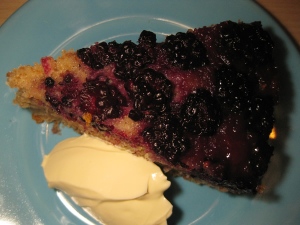We recently ordered edible flowers for the first time from the Able and Cole box scheme. I’ve eaten flowers at restaurants before, which amuses me slightly as I imagine me and the Canadian chowing down on the flowers from the vase on the table.
As well as the obvious aesthetic that flowers will provide to the greens of your salad, they tend to also add a certain peppery-ness – a trait that goes down very well in our flat.
So for this very simple salad we required:
- Salad leaves – of your choice really, one of the things we’re growing is salad so we had a selection of ‘just harvested’ leaves (Marvel of the Seasons and Cocarde varieties)
- A selection of edible flowers – we ordered from Able and Cole
- About 150g soft cheese – we had a lovely soft cow’s milk cheese that had a medium flavour to it
- Handful of fresh basil leaves
- 2 medium tomatoes, chopped
- Salami – we had enough for three of us to eat dinner, but obviously adjust to your preferences and the amount of people you are doing dinner for
- Honey mustard dressing – we always make this and usually have some aged, sitting in the fridge waiting for a salad like this
- Carefully wash the edible flowers – just gently swirl them around in a bowl of water and then drain in a colander and pop on a piece of kitchen roll to full drain the water off.
- Wash the salad leaves and other vegetables – we kept our salad leaves whole as they were straight off the balcony and nice and tender. Chop if required though, also chop the tomato into bite-sized pieces.
- Slice enough cheese for each salad and pair each slice with a slice of your salami.
- Now serve up – mix the tomatoes and salad leaves and divvy up portions as required. Add a serving of the salami and cheese to each serving and then sprinkle the flowers and basil over the top.
- Drizzle each salad with your dressing of choice – in our case it was homemade honey mustard.
- You could make this vegetarian by opting out of the salami and opting for some toasted sunflower seeds or pinenuts – both would work lovely.
- This could also be bulked out with some sliced avocado.






 Approximately 80g per person of bulgar wheat
Approximately 80g per person of bulgar wheat



